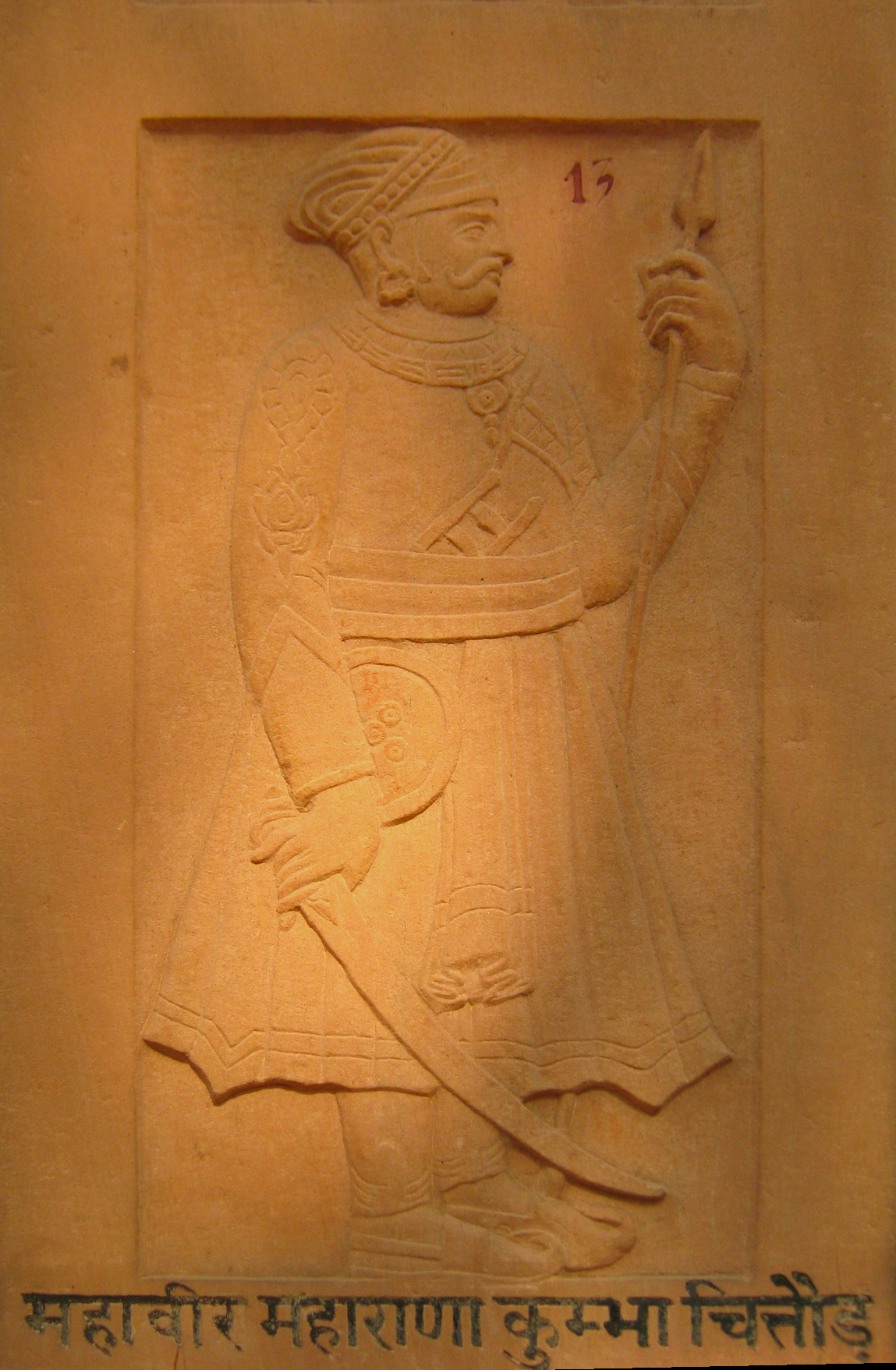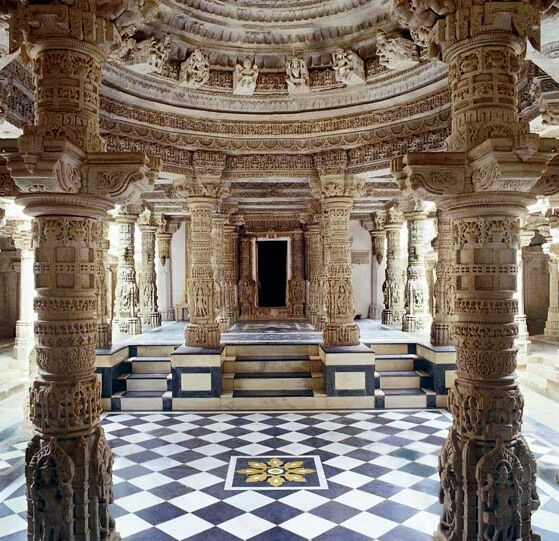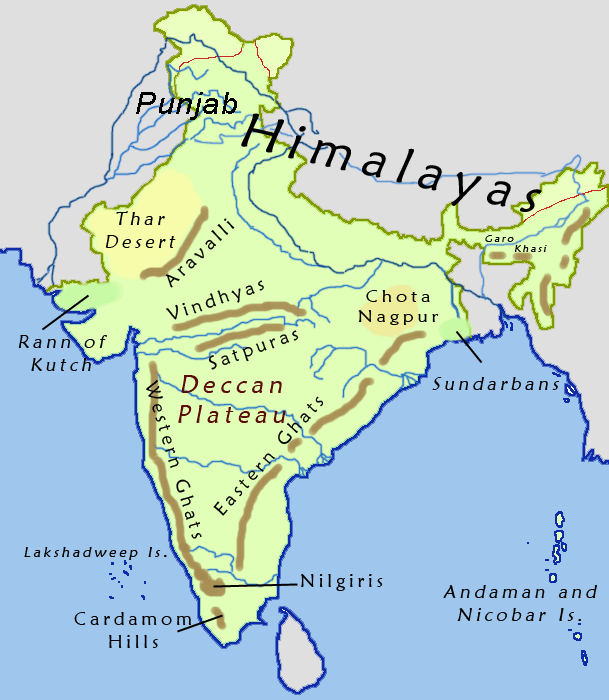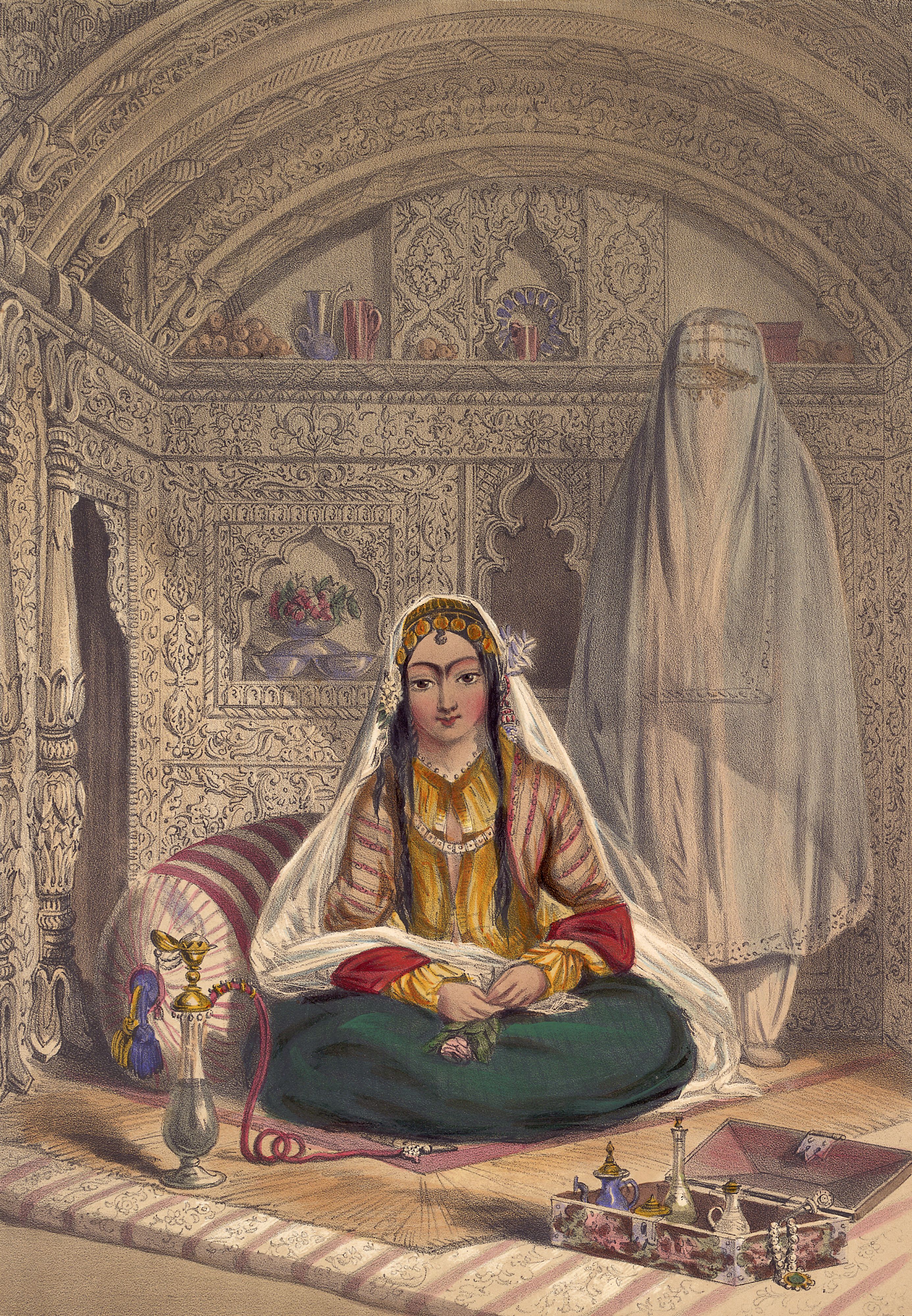|
Durgadas Rathore
Durgadas Rathore (13 August 1638 – 22 November 1718) was the Rathore Rajput General of Kingdom of Marwar. He is credited with having preserved the rule of the Rathore dynasty over Marwar, India, following the death of Maharaja Jaswant Singh in the 17th century. In doing so he had to defy Aurangzeb, a Mughal emperor. He commanded the Rathore forces during the Rajput War (1679–1707) and played a major role in the Rajput Rebellion (1708–1710) which became one of the main reason of decline of Mughal Empire. He was elected as the leader of the revolt along with Raja Jai Singh II of Jaipur. He won a number of victories against the Mughals and forced many Mughal officers to pay tribute to him in the form of chauth. Early life Durgadas was the son of Askaran Rathore, a Rajput minister of Jaswant Singh, the ruler of Marwar. He was a distant relative of the royal family, being a descendant of Karana, a son of Rao Ranmal. Support for Ajit Singh Jaswant Singh was campai ... [...More Info...] [...Related Items...] OR: [Wikipedia] [Google] [Baidu] |
Sardar
Sardar, also spelled as Sardaar/Sirdar ( fa, سردار, , 'commander', literally 'headmaster'), is a title of royalty and nobility that was originally used to denote princes, noblemen, chiefs, kings and other aristocrats. It has also been used to denote a chief or leader of a tribe or group. It is used as a Persian synonym of the title ''Emir'' of Arabic origin. In modern history it is known as the title for Afghan Princes during the Afghan Royal Kingdom, descending from the Emir Sultan Mohammed Khan Telai. It was also used as a title of merit in the ''Nishan-i-Sardari'' for outstanding service in statecraft. The term and its cognates originate from Persian ''sardār'' () and have been historically used across Persia (Iran), the Ottoman Empire and Turkey (as "Serdar"), Mesopotamia (now Iraq), Syria], South Asia (Pakistan, India, Bangladesh and Nepal), the Caucasus, Central Asia, the Balkans and Egypt (as "Sirdar"). The term ''sardar'' was used by Sikh leaders and general ... [...More Info...] [...Related Items...] OR: [Wikipedia] [Google] [Baidu] |
Ranmal
Rao Ranmal (1392 – October 1438), also called Ran Mal or Ridmal, was the Rathore ruler of Marwar (1428 to 1438). A notable expansionist and skilled warrior, Ranmal is also noteworthy for having twice served as regent of the kingdom of Mewar under two different kings. After having been displaced as heir to Marwar in favour of a younger brother, Ranmal had joined the court of his brother-in-law, Rana Lakha Singh of Mewar. There, he amassed significant influence, eventually becoming regent to his minor nephew Mokal Singh following the death of Lakha in 1421. In 1428, Ranmal returned to Marwar to claim his ancestral throne, left vacant by the deaths of his father and brothers. When Mokal Singh was assassinated five years later, Ranmal once again took on the governance of Mewar, now in the name of Mokal's young son Kumbha. During both his regencies of Mewar, as well as his rule of his own kingdom, Ranmal had launched numerous successful military campaigns against neighbouring st ... [...More Info...] [...Related Items...] OR: [Wikipedia] [Google] [Baidu] |
Maratha
The Marathi people (Marathi: मराठी लोक) or Marathis are an Indo-Aryan ethnolinguistic group who are indigenous to Maharashtra in western India. They natively speak Marathi, an Indo-Aryan language. Maharashtra was formed as a Marathi-speaking state of India in 1960, as part of a nationwide linguistic reorganization of the Indian states. The term "Maratha" is generally used by historians to refer to all Marathi-speaking peoples, irrespective of their caste; however, now it may refer to a Maharashtrian caste known as the Maratha. The Marathi community came into political prominence in the 17th century, when the Maratha Empire was established under Chhatrapati Shivaji; the Marathas are credited to a large extent for ending Mughal rule over India. History Ancient to medieval period During the ancient period, around 230 BC, Maharashtra came under the rule of the Satavahana dynasty, which ruled the region for 400 years.India Today: An Encyclopedia of Life in ... [...More Info...] [...Related Items...] OR: [Wikipedia] [Google] [Baidu] |
Sultan Muhammad Akbar
Muhammad Akbar ( 11 September 1657 – 31 March 1706 ) was a Mughal prince and the fourth son of Emperor Aurangzeb and his chief consort Dilras Banu Begum. Akbar led a rebellion against his father and fled the Deccan after the failure of that venture. He later went into exile to Persia, where he died. He was the father of Nikusiyar, who was Mughal emperor for a few months in 1719. Early life Muhammad Akbar was born on 11 September 1657 in Aurangabad to Prince Muhiuddin (later known as 'Aurangzeb' upon his accession) and his first wife and chief consort Dilras Banu Begum. His mother was a princess of the prominent Safavid dynasty of Iran (Persia) and was the daughter of Mirza Badi-uz-Zaman Safavi, the Viceroy of Gujarat. Dilras died when Akbar was only one month old. For this reason, Akbar was brought up with special care and affection by his father and his oldest sister, Princess Zeb-un-Nissa. Akbar was his father's best-loved son as Aurangzeb, himself, said in a letter to ... [...More Info...] [...Related Items...] OR: [Wikipedia] [Google] [Baidu] |
Sisodia
The Sisodia is an Indian Rajput dynasty belonging to the clan that ruled over the kingdom of Mewar in Rajasthan. The name of the clan is also transliterated as ''Sesodia'', ''Shishodia'', ''Sishodia'', ''Shishodya'', ''Sisodya'', ''Sisodiya'', ''Sisodia''. Origins The Sisodia dynasty traced its ancestry to Rahapa, a son of the 12th century Guhila King Ranasimha. He founded the village of Shisoda, in modern day Rajsamand district, as his capital, after which his descendants were called Sisodias. The main branch of the Guhila dynasty ended with their defeat against the Khalji dynasty at the Siege of Chittorgarh (1303). In 1326, Rana Hammir, who belonged to Sisodiya branch, reclaimed control of the region, re-established the dynasty, and also became the founder of the Sisodia dynasty clan, a branch of the Guhila dynasty, to which every succeeding Maharana of Mewar belonged, and the Sisodias regained control of Chittor, the former Guhila capital.''The Rajputs of Rajputana: a ... [...More Info...] [...Related Items...] OR: [Wikipedia] [Google] [Baidu] |
Mewar
Mewar or Mewad is a region in the south-central part of Rajasthan state of India. It includes the present-day districts of Bhilwara, Chittorgarh, Pratapgarh, Rajsamand, Udaipur, Pirawa Tehsil of Jhalawar District of Rajasthan, Neemuch and Mandsaur of Madhya Pradesh and some parts of Gujarat. For centuries, the region was ruled by Rajputs. The princely state of Udaipur emerged as an administrative unit during the period of British East India Company governance in India and remained until the end of the British Raj era. The Mewar region lies between the Aravali Range to the northwest, Ajmer to the north, Gujarat and the Vagad region of Rajasthan to the south, the Malwa region of Madhya Pradesh state to the south and the Hadoti region of Rajasthan to the east. Etymology The word "Mewar" is vernacular form of "Medapata" ( IAST: Medapāṭa), the ancient name of the region. The earliest epigraph that mentions the word "Medapata" is a 996–997 CE (1053 VS) inscripti ... [...More Info...] [...Related Items...] OR: [Wikipedia] [Google] [Baidu] |
Veer Durgadas Rathore
The Veer is an option running play often associated with option offenses in American football, made famous at the collegiate level by Bill Yeoman's Houston Cougars. It is currently run primarily on the high school level, with some usage at the collegiate and the professional level where the Veer's blocking scheme has been modified as part of the zone blocking system. The Veer is an effective ball control offense that can help minimize mismatches in a game for a team. However, it can lead to turnovers with pitches and handoff option reads. Formations The Veer can be run out of any variety of formations, although it was primarily designed to be run out of the split-backed, aptly named veer formation. It has been used out of the I-formation (and its variants, including the Power-I and Maryland I) and the wishbone formation. Some variants of the triple option have now made the jump to the shotgun formation, which has become a popular option formation since Eric Crouch a ... [...More Info...] [...Related Items...] OR: [Wikipedia] [Google] [Baidu] |
Mount Abu
Mount Abu () is a hill station in the Aravalli Range in Sirohi district of the state of Rajasthan in western India.The mountain forms a rocky plateau 22 km long by 9 km wide. The highest peak on the mountain is Guru Shikhar at above sea level. It is referred to as 'an oasis in the desert' as its heights are home to rivers, lakes, waterfalls and evergreen forests. The nearest train station is Abu Road railway station 28 km away. History The ancient name of Mount Abu is Arbuda. In the Puranas, the region has been referred to as ''Arbudaranya'' ("forest of ''Arbhuda''") and 'Abu' is a diminutive of this ancient name. It is believed that sage Vashistha retired to the southern spur at Mount Abu following his differences with sage Vishvamitra. There is another history story according to which a serpent named "Arbuda" saved the life of Nandi (Lord Shiva's bull). The incident happened on the mountain that is currently known as Mount Abu and so the mountain is named ... [...More Info...] [...Related Items...] OR: [Wikipedia] [Google] [Baidu] |
Aravalli Hills
The Aravalli Range (also spelled ''Aravali'') is a mountain range in Northern- Western India, running approximately in a south-west direction, starting near Delhi, passing through southern Haryana, Rajasthan, and ending in Ahmedabad Gujarat. The highest peak is Guru Shikhar on Mount Abu at . The Aravalli Range is arguably the oldest geological feature on Earth, having its origin in the Proterozoic era. The Aravalli Range is rich in natural resources and serves as check to the growth of the western desert. Etymology Aravalli, a composite Sanskrit word from the roots ''"ara"'' and ''"vali"'', literally means the ''"line of peaks"''. Natural history Geology The Aravalli Range, an eroded stub of ancient mountains, is believed to be the oldest range of fold mountains in India.Roy, A. B. (1990). Evolution of the Precambrian crust of the Aravalli Range. Developments in Precambrian Geology, 8, 327–347. The natural history of the Aravalli Range dates back to ti ... [...More Info...] [...Related Items...] OR: [Wikipedia] [Google] [Baidu] |
Harem
Harem ( Persian: حرمسرا ''haramsarā'', ar, حَرِيمٌ ''ḥarīm'', "a sacred inviolable place; harem; female members of the family") refers to domestic spaces that are reserved for the women of the house in a Muslim family. A harem may house a man's wife or wives, their pre-pubescent male children, unmarried daughters, female domestic servants, and other unmarried female relatives. In harems of the past, slave concubines were also housed in the harem. In former times some harems were guarded by eunuchs who were allowed inside. The structure of the harem and the extent of monogamy or polygamy has varied depending on the family's personalities, socio-economic status, and local customs. Similar institutions have been common in other Mediterranean and Middle Eastern civilizations, especially among royal and upper-class families, and the term is sometimes used in other contexts. In traditional Persian residential architecture the women's quarters were known as '' anda ... [...More Info...] [...Related Items...] OR: [Wikipedia] [Google] [Baidu] |
Ajmer
Ajmer is one of the major and oldest cities in the Indian state of Rajasthan and the centre of the eponymous Ajmer District. It is located at the centre of Rajasthan. It is also known as heart of Rajasthan. The city was established as "''Ajayameru''" (translated as "Invincible Hills") by a Chahamana ruler, either Ajayaraja I or Ajayaraja II, and served as their capital until the 12th century CE. Home to the dargah of Moinuddin Chishti, Ajmer is one of the most important destinations of Islamic pilgrimage in South Asia. Ajmer is surrounded by the Aravalli Mountains. Ajmer had been a municipality since 1869. Ajmer has been selected as one of the heritage cities for the HRIDAY and Smart City Mission schemes of the Government of India. History Ajmer was originally known as ''Ajayameru''. The city was founded by an 11th-century Chahamana king Ajaydeva. Historian Dasharatha Sharma notes that the earliest mention of the city's name occurs in Palha's '' Pattavali'', whic ... [...More Info...] [...Related Items...] OR: [Wikipedia] [Google] [Baidu] |







